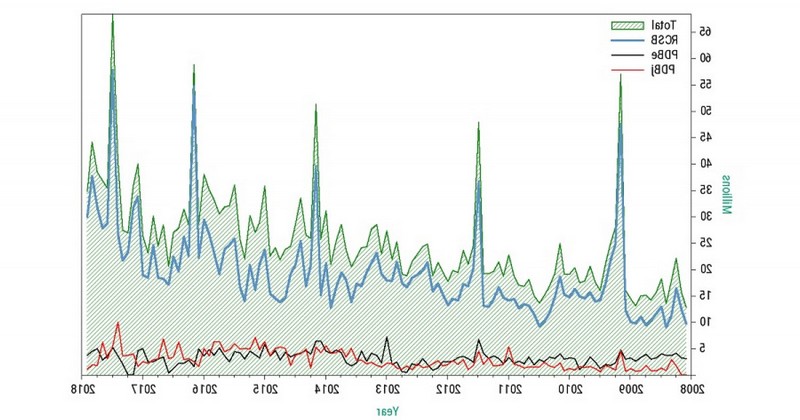Analysis of Variance (ANOVA): what is it and how is it used in statistics?

A type of parametric test sometimes called Fisher's analysis of variance.
In statistics, when comparing the means of two or more samples in relation to some variable of interest (e.g., anxiety after psychological treatment), tests are used to determine whether or not there are significant differences between the means.
One such test is the Analysis of Variance (ANOVA).. In this article we will learn what this parametric test consists of and what assumptions must be met in order to use it.
Analysis of Variance (ANOVA): what is it?
In statistics, we find the concept of analysis of variance (ANOVA), which consists of a grouping of statistical models and their associated procedures, where the variance is partitioned into certain components, due to different explanatory variables.due to different explanatory variables. If we break down its acronym, ANOVA stands for ANalysis Of VAriance.
The Analysis of Variance (ANOVA) is a type of parametric test. This means that a number of assumptions must be met in order to apply it, and that the level of the variable of interest must be at least quantitative (i.e. at least interval, e.g. IQ, where there is a relative 0).
Analysis of variance techniques
The first analysis of variance techniques were developed in the 1920s and 1930s by R.A. Fisher, a statistician and geneticist. That is why analysis of variance (ANOVA) is also known as "Anova". is also known as "Fisher's Anova" or "Fisher's analysis of variance".This is also due to the use of Fisher's F distribution (a probability distribution) as part of the hypothesis testing.
The analysis of variance (ANOVA) arises from the concepts of linear regression. Linear regression, in statistics, is a mathematical model used to approximate the dependence relationship between a dependent variable Y (e.g. anxiety), the independent variables Xi (e.g. different treatments) and a random term.
Function of this parametric test.
Thus, an analysis of variance (ANOVA) serves to determine whether different treatments (e.g., psychological treatments) show significant differencesor if, on the contrary, it can be established that their population means do not differ (they are practically the same, or their difference is not significant).
That is, ANOVA is used to test hypotheses about differences in means (always more than two). ANOVA involves an analysis or decomposition of the total variability; this, in turn, can be attributed mainly to two sources of variation:
- Intergroup variability
- Intra-group variability or error
Types of ANOVA
There are two types of analysis of variance (ANOVA):
1. Anova I
When there is only one classification criterion (independent variable; for example, type of therapeutic technique). In turn, it can be intergroup (there are several experimental groups) and intragroup (there is only one experimental group).
2. Anova II
In this case, there is more than one classification criterion (independent variable). As in the previous case, this can be intergroup and intragroup.
Characteristics and assumptions
When analysis of variance (ANOVA) is applied in experimental studies, each group consists of a certain number of subjects, and it is possible for the groups to differ in terms of this number. When the number of subjects coincides, it is called a balanced model..
In statistics, in order to apply analysis of variance (ANOVA), a number of assumptions must be met:
1. Normality
This means that the scores on the dependent variable (e.g. anxiety) must follow a normal distribution. This assumption is tested by means of so-called goodness-of-fit tests..
Independence
This assumption implies that there is no autocorrelation between the scores, i.e. that the scores are independent of each other. To ensure that this assumption is fulfilled, we must perform a MAS (simple random sampling). to select the sample we are going to study or work on.
3. Homoscedasticity
This term means "equality of variances of the subpopulations".. The variance is a statistic of variability and dispersion, and increases the greater the variability or dispersion of the scores.
The homoscedasticity assumption is tested by Levene's or Barlett's test. If this assumption is not met, another alternative is to perform a logarithmic transformation of the scores.
Other assumptions
The above assumptions must be met when intergroup analysis of variance (ANOVA) is used. However, when intragroup ANOVA is used, the above assumptions and two further assumptions must be met:
1. Sphericity
If not met, it would indicate that the different sources of error are correlated with each other.. A possible solution if that happens is to perform a MANOVA (Multivariate Analysis of Variance).
2. Additivity
Assumes no subject x treatment interaction; failure to comply would increase the error variance.
Bibliographical references:
- Botella, J., Sueró, M., Ximénez, C. (2012). Análisis de datos en psicología I. Madrid: Pirámide.
- Fontes de Gracia, S. García, C. Quintanilla, L. et al. (2010). Fundamentos de investigación en psicología. Madrid.
- Martínez, M. A. Hernández, M. J. Hernández, M. V. (2014). Psicometría. Madrid: Alianza.
(Updated at Apr 12 / 2024)